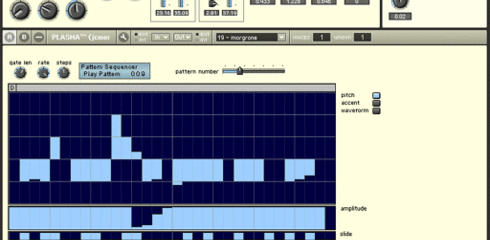mx-20 bassline
vanilla bassline seq with new core filter
1.0 (Updated 18 years ago)
68.7kB
September 10, 2005
Reaktor 5 or lower
DESCRIPTION
Nothing special here, but I was fooling with the core and came up with a new filter, loosely modeled after the Korg MS-20. Added the Plasma sequencer borrowed from the prolific Steven V. And a delay. Which you can turn off.
Some of the presets will cause an overload on startup for some reason.

COMMENTS (13)